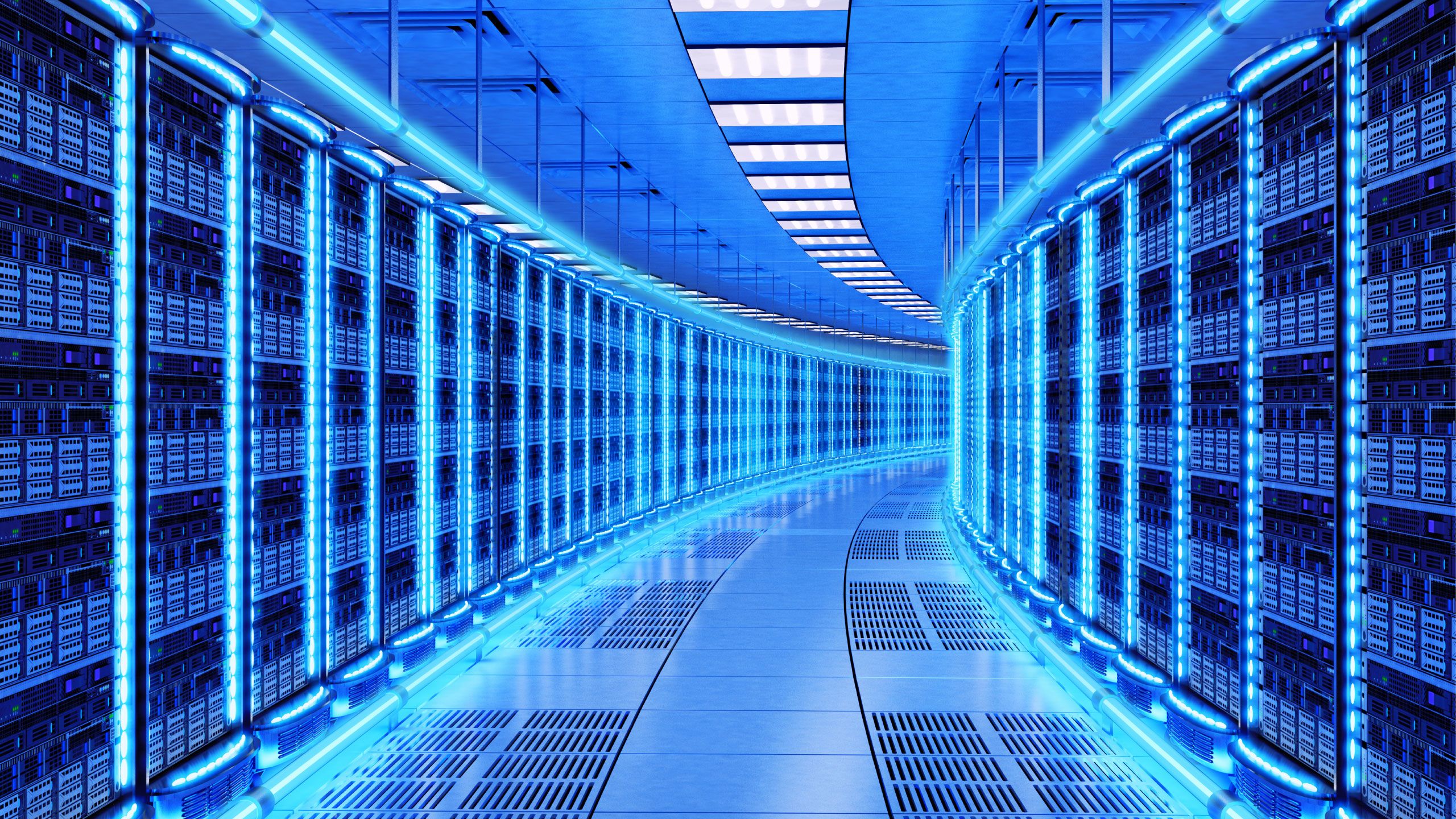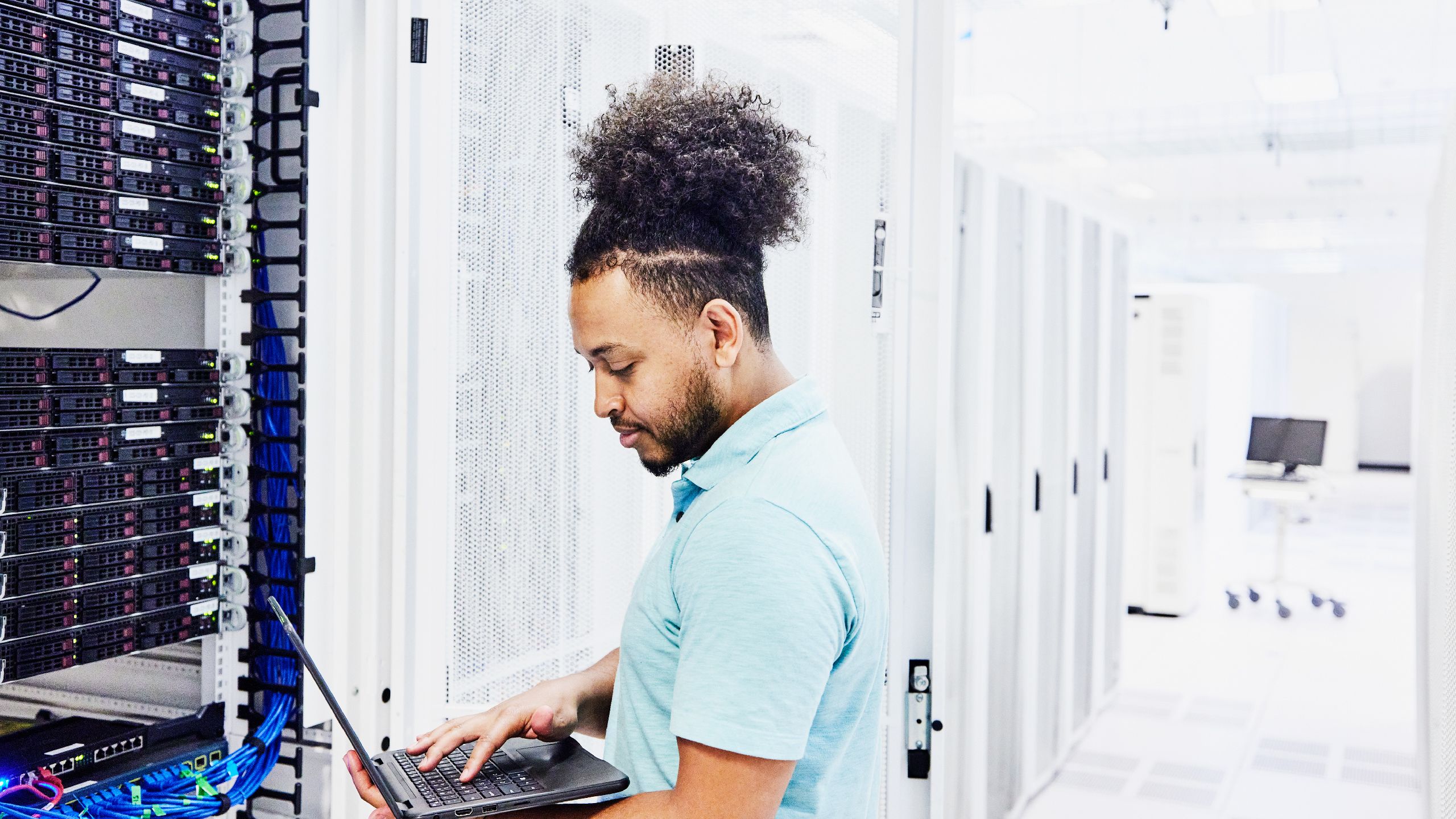TECHNOLOGICAL ACCELERATION
Deepening disruptions

The computational power of artificial intelligence once doubled every two years, according to AI research laboratory OpenAI. It’s now every 3.4 months.1 The pace of gains in technology is exponential, and it is hard for any enterprise to keep pace.
As the cost of labor increases, capital investments in automation and other technologies will become both necessary and more attractive. The pandemic has shifted thinking in many quarters, spurring longer-term investments into deeper tech like computer vision and machine learning. Companies that figure out how to create the best collaborative interaction between their technologies, their employees, and their customers, putting digital at their core and maximizing the creative output of the combination of technology and talent—literally becoming the bionic enterprise—will thrive.
We are in the midst of what industry watchers refer to as the Fourth Industrial Revolution: the convergence of digital, physical, and biological worlds as we see the IT Revolution of the 1990s and the first two decades of the 21st century move into high gear.
Distributive ledger technologies—of which blockchain is the best known—are rapidly rewiring entire industries. Despite the frothy market speculation over fashionably named cryptocurrencies, much more significant is what’s happening behind the scenes: the entire back-end infrastructure of our payments ecosystem is being rewritten. Blockchain and cryptotechnologies promise a more decentralized, efficient, and secure payment infrastructure.
NFTs, another distributive ledger application, are making major inroads in the art, music, media, and gaming industries as a way to own—and trade—digital assets. Supply chain is one more example: Home Depot employs distributive ledgers for vendors and receiving teams across its supply chain, providing simultaneous, real-time notification of deliveries and allowing the company to more quickly and effectively move stock from point-of-origin to its customers.
Additive Manufacturing (3D printing) has moved from prototyping to being used for mass production, such as seen across the automotive supply chain. The aerospace industry is also using it to produce higher-quality, lighter-weight parts for aircraft, helping to reduce their global carbon footprint. And it is not just how goods are being produced, but where: Additive tech is becoming distributive.
For example, manufacturers are able to send the data instructions for a new part and have it printed locally, saving both transit costs and time—offering a way to further vertically-integrate, and speed up, the supply chains of the future.
The metaverse is the next evolution. Its 3D dynamic virtual worlds promise the next generation of remote work, of media, of gaming, and of retail and brand experiences. Apple, for example, is reportedly working on a version of its AirPods with a camera to facilitate interactivity between a virtual metaverse and the real world.
It's all moving so fast—no wonder executives are struggling.
WHAT DOES THIS MEAN?
Executives know they have to conquer a brave new digital world, but quite frankly they don’t know how. Seventy-eight percent of CEOs in the Disruption Index survey believe that the adoption of digital tools is critical to the survival of their company, yet roughly half of all executives surveyed say that their top challenge is poor execution of technology implementation. They are in a quandary: They know they need to move faster than ever, but it is all so new and moving so fast, they worry whether they can be successful. Most companies have a long history of IT investments gone wrong – projects that cost too much, took too long, and didn’t deliver promised outcomes. Most companies are struggling with a mixture of aging IT systems that need to change, more data than they know what to do with, and a lack of digital know-how.

For companies to survive and thrive, they will need to develop their digital metabolism. Making digital the core of their business systems.
Fortunately, the new digital infrastructure is much more user-friendly than old-school corporate IT. Cloud and SaaS technologies, which allow customers to get out of the software implementation business and focused on running their businesses, help companies make these systems a utility—much more plug-and-play versus the historic, often painful, long-term IT implementation projects of the past.

Similarly, advanced data companies like Palantir are helping companies make sense of the patchwork of IT systems. They pull insights from multiple and diverse datasets and drive actionable and intelligent decision making, despite aging IT infrastructure.
Important to note: With the increase in data also comes the risk of inappropriate or even illegal exploitation of data. We should expect the continued risk of data privacy and also a growing threat of cybercrime. As governments try to catch up with this quickly evolving landscape, companies should likewise prepare to respond to an ever-increasingly regulated—and highly disjointed, as national and local governments move to respond—landscape. For every digital strategy, executives will need to devise a complimentary digital risk and compliance approach.
By the end of the decade, we can fully expect that all companies of any stature will be digital companies. All executives must run the gauntlet, digital to the core.



CYBER RISK REQUIRES SECURITY AT BUSINESSES’ CORE
Technology has given us much to be thankful for in the past 24 months. Ten years ago, the prospect of pivoting global workforces to remote working overnight would have been unthinkable. Productivity levels during a 2010 pandemic would have looked very different.
However, as with all macroeconomic disruptive forces, threats will emerge in addition to opportunities for organizations, sharply illustrated through the accelerated advances in tech.
The pandemic has, perhaps unsurprisingly, resulted in a surge in cybercrime. The FBI’s Internet Crime Complaint Center registered 791,790 complaints in 2020—up 69.4% on 2019—accounting for $4.2 billion in losses reported by individuals.
The levels of complexity and sophistication in cyberattacks run at a pace proportionate, if not faster, than the advances in preventative measures available to counter the threats. The supply chain attack on SolarWinds’ Orion network monitoring platform, which could have potentially impacted more than 18,000 customers including government agencies and Fortune 500 companies, only serves to cement cyber security as a crucial boardroom agenda item for 2022 and beyond.
Technological advances bring new security concerns. Hardware, firmware, and software compromise is becoming more sophisticated and thus harder to detect and mitigate. Companies will need to increase their monitoring of vendors through their provision of ongoing evidence of secure creation and maintenance, with all aspects of the supply chain needing to be scrutinized from vendor and consumer perspectives.
The Internet of Things, Industrial Internet of Things, 5G/6G, and WiFi 6 are all capable of being highly disruptive to markets, and the security of these solutions is not always a given. The business world today is also increasingly enabled through Software as a Service, which can bring many new attack surfaces into focus.
As new solutions are created and connected, more opportunity for digital complexity equates to a greater likelihood of breach or data manipulation for malicious purposes. Autonomous and semi-autonomous solutions have the potential to create physical and digital hazards, and the complex programming solutions being developed are even more dangerous due to the many application permutations that require significant observation, feedback and controls needed to ensure safe usage.
While policy and politics are generally the creator of regulatory compliance metrics, put in place to protect the public, regulatory compliance almost always comes after the fact. Security technologies exist to meet compliance objectives if properly adopted and implemented, and as they mature their ability to solve problems must be tested and confirmed as effective before any upgrades or displacement of existing solutions.
From this perspective, security must be viewed as a journey, not a destination, and establishing “Security Maturity” will be critical in increasing the effectiveness and outcomes of corporate security infrastructure. While the costs to do so often prove to be the nemesis of meeting these standards from the outset, the unmistakable connection between a growing number of disruptive forces and increases in cyber risks suggest that the true cost of inactivity or sub-standard implementation could be much, much higher.



References
1. Dario Amodei and Danny Hernandez, “AI & Compute,”
OpenAI, https://openai.com/blog/ai-and-compute/.
